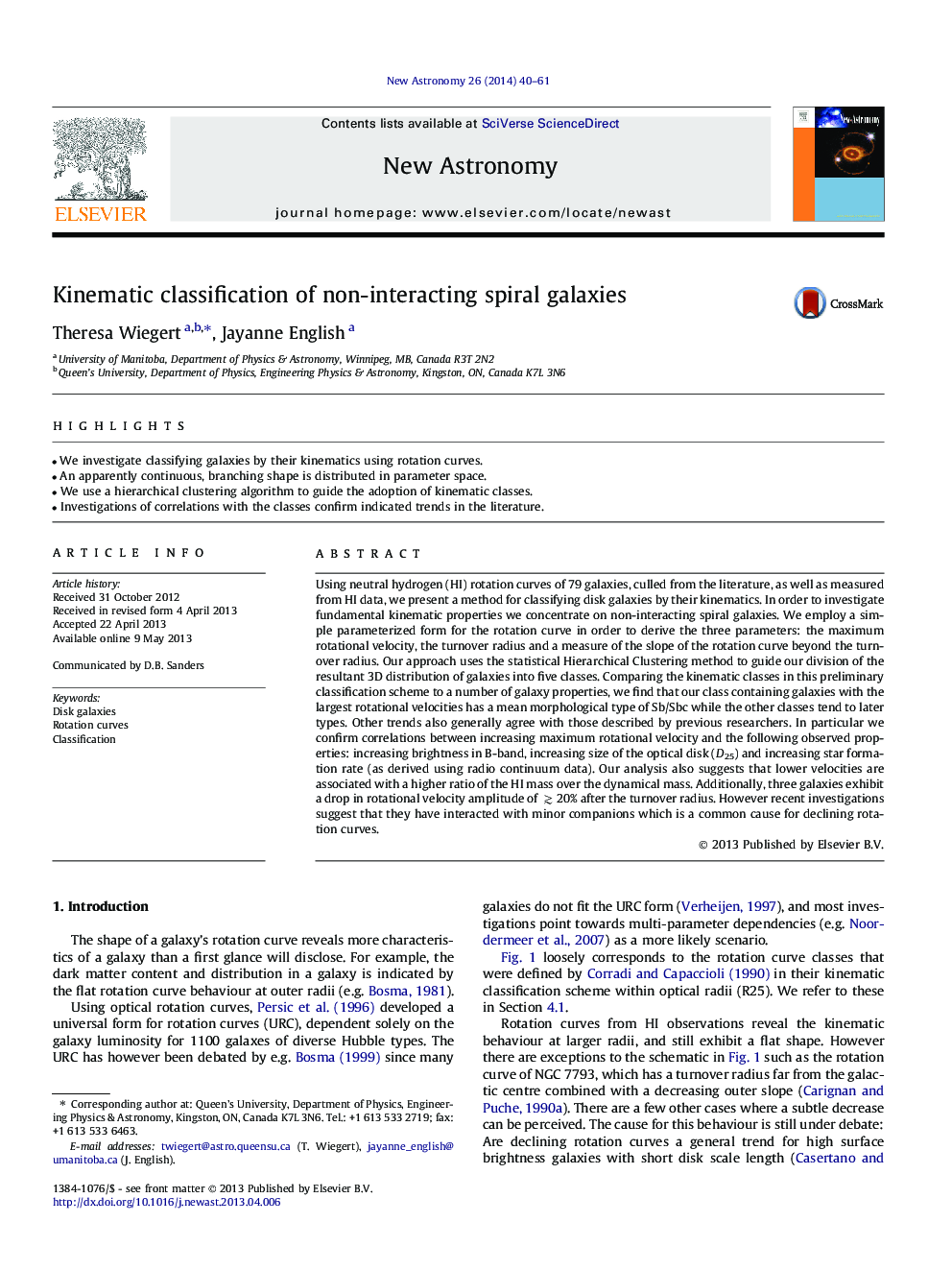| Article ID | Journal | Published Year | Pages | File Type |
|---|---|---|---|---|
| 8141513 | New Astronomy | 2014 | 22 Pages |
Abstract
Using neutral hydrogen (HI) rotation curves of 79 galaxies, culled from the literature, as well as measured from HI data, we present a method for classifying disk galaxies by their kinematics. In order to investigate fundamental kinematic properties we concentrate on non-interacting spiral galaxies. We employ a simple parameterized form for the rotation curve in order to derive the three parameters: the maximum rotational velocity, the turnover radius and a measure of the slope of the rotation curve beyond the turnover radius. Our approach uses the statistical Hierarchical Clustering method to guide our division of the resultant 3D distribution of galaxies into five classes. Comparing the kinematic classes in this preliminary classification scheme to a number of galaxy properties, we find that our class containing galaxies with the largest rotational velocities has a mean morphological type of Sb/Sbc while the other classes tend to later types. Other trends also generally agree with those described by previous researchers. In particular we confirm correlations between increasing maximum rotational velocity and the following observed properties: increasing brightness in B-band, increasing size of the optical disk (D25) and increasing star formation rate (as derived using radio continuum data). Our analysis also suggests that lower velocities are associated with a higher ratio of the HI mass over the dynamical mass. Additionally, three galaxies exhibit a drop in rotational velocity amplitude of â³20% after the turnover radius. However recent investigations suggest that they have interacted with minor companions which is a common cause for declining rotation curves.
Keywords
Related Topics
Physical Sciences and Engineering
Physics and Astronomy
Astronomy and Astrophysics
Authors
Theresa Wiegert, Jayanne English,
